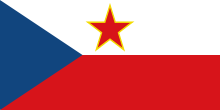Attacks on garrisons Independent State of Croatia

Fighters of the Mostar Battalion on the move towards Kupres, 1942. Attacks on garrisons were, along with attacks on communications, an integral part of partisan strategy and tactics developed on the territory of occupied Yugoslavia during World War II. These attacks had multiple meanings: They enabled the formation and expansion of free territory They were a way of supplying troops and people in the free territory They were an important part of the effort to weaken the enemy militarily, politically, and morally. The uprising in occupied Yugoslavia in September 1941. The Independent State of Croatia was formed with the help of occupation troops, but as a puppet creation without sufficient support among the people, it failed to gain control over its territory during the entire war. The administrative system of the NDH was very shaken by the uprising of the NDH in 1941. Later during the war, especially from the middle of 1942, the NOVJ managed to force the NDH to strategically defen...




